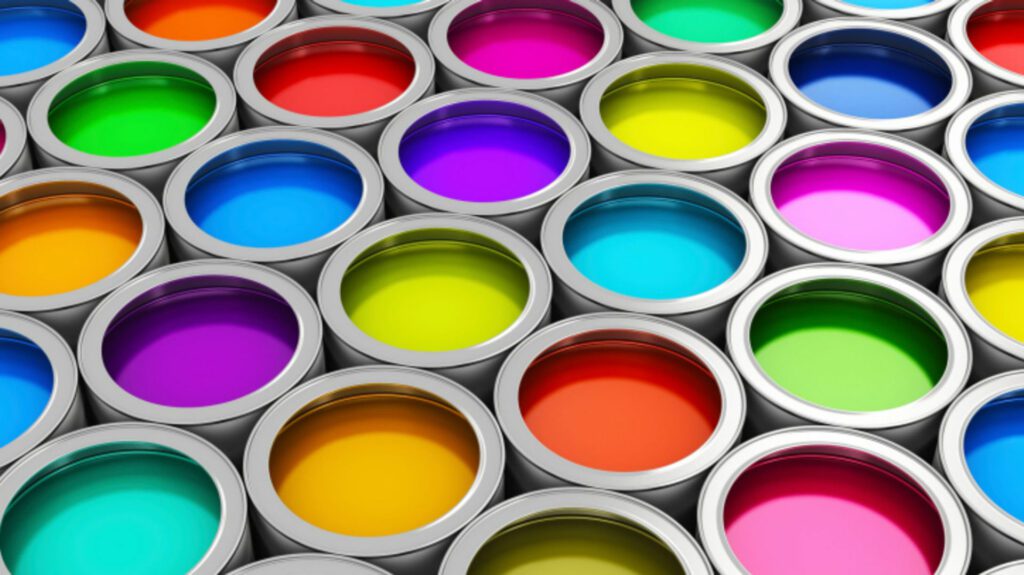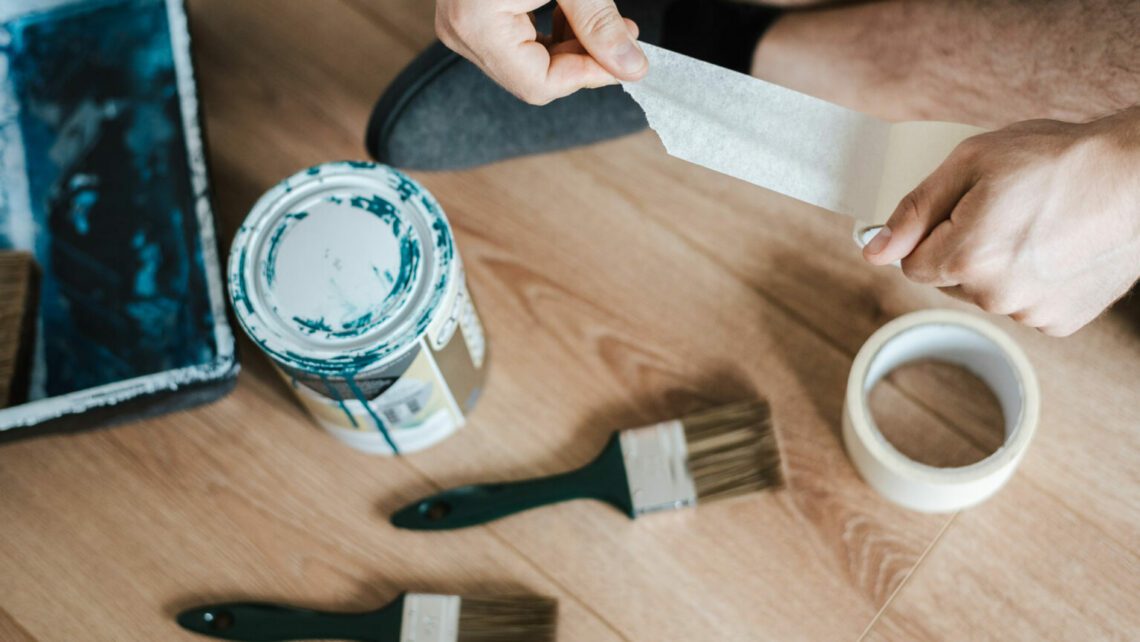Whether you’re looking to boost your home’s resale value, marketability, or simply revitalize a paint job that was done years ago, there is nothing like a fresh coat of paint to make your house look and feel brand new. However, painting a house can be costly. The average cost of a good quality paint job in the Bay Area can range from $5,000 for a very simple small house that requires less prep work because of its simple trim to up to $60,000-$80,000 for a more complex, Victorian style house with complicated windows, trim, and lead paint that may require more prep work or even scaffolding.
The price of painting a home is much like the price of a car – it varies, greatly! A brand new car can range from $15,000 to $500,000, and painting a home is no different.
This is because house painting costs hinge on a variety of factors, ranging from the cost of labor, material you’re covering, the products you use to paint your home’s exterior, but the most important factors that account for variation are the trim, time of preparation, windows, and age of your home. Here are some of the major factors that will impact how much painting a house will cost you.
Paint Prep Costs
Much of the costs of a paint job accumulate before a painter even commits a paintbrush to the wall. Professionals will need to do the necessary prep work to ensure a job well done, and you should factor these hours spent prepping into your paint quote. There are typically three factors a painter will take into account when evaluating the cost of prep, namely, how much scraping, priming, and caulking will the project require?
If the exterior of your home is in particularly bad shape, it will cost much more to prepare the area for prep – any cracks or holes will need to be filled in, and power washing and sanding might be used to make the area a perfect canvas for a new coat of paint. Severe peeling, wood rot, alligatoring, cracked window panes, crumbling glaze, and loose caulking around trim can represent other issues that warrant more prep work.
Additionally, if you have an older home, with older trim and windows, preparation can take much longer and the cost of painting it will subsequently be much higher than a simple one story home. For example, in the Oakland neighborhood of Trestle Glen, the intricate homes in the styles of Craftsman, Prairie, Tudor Revival, Spanish, and Neo-Mediterranean from the 1920’s, 1930’s and 1940’s may cost a homeowner $15,000-$35,000 to paint, whereas a more modest, simple home in San Francisco may cost as low as $8,000.
Older homes built before the 1980s also may have been finished with lead-based paint, which can be a harmful material that costs contractors more to prep around because of the potential exposure to toxic chemicals. Deteriorating lead paint is a huge safety hazard and will need to be properly cleaned before professionals can begin painting.
Average costs range from $0.50 to $1.50 per square foot for patching, $0.50 to $2.50 per square foot for sanding, scraping, and stripping, and for more expensive prep work such as power washing, $220 to $380. All in all, extra prep work can cost about $25 to $50 per hour.
How Much Does Paint Cost?

When perusing which brand of paint to take home at the hardware store, you may notice that the prices of a gallon of paint vary quite dramatically. Indeed, some paints will go less for $20, whereas others can run you up to $90 a gallon. This depends on the sheen, the grade of the paint, and other special features paints may have depending on what project you are using them for.
For example, some paints are mold resistant, making them an appealing choice if you live in a rainy climate. Others may be odor-suppressant, or are significantly thick, requiring less coats. Still others may boast lifetime warranties, but professionals say that this may not be a worthwhile investment. Very few paints actually live up to the lifetime warranty guarantee – according to a Consumer Report Test that tested the durability of paints, only a few survived past the nine year mark, and what’s more, you probably will tire of the color long before a good quality paint job starts to show wear.
Although going with a higher quality paint may force you to shoulder higher upfront costs, according to experts, skimping on paint quality can be one of the worst mistakes people make when painting their homes. A good rule of thumb is to never go with one coat for a proper paint job. A few coats will ensure that your paint job will last for years to come.
A good quality paint ensures even coverage, fewer coats, time savings, cost savings, and durability. Higher solids content typically indicates better paint quality. Cheaper paints will look more uneven and blotchy because they are made from cheaper materials that typically cannot even achieve the thick, even coverage that’s made possible with premium paints. Premium paints hold color longer, and are designed to endure peeling and blistering because of proprietary production technologies. Therefore, investing in better quality paints will actually save you time and money because you won’t have to repaint or clean the paint surfaces as often – their resistance to chalking, mildew, and dirt make them highly resistant and durable.
Labor
In the Bay Area, you could hypothetically hire a contractor to paint your home for $3,000 with one coat of paint, but this can only be achieved if the painter is skimping on materials. It will also likely be the work of an unlicensed painter. With a good quality paint job, you are paying not only for the quality of the paint itself, but good craftsmanship, a licensed professional, and ultimately, a painter’s labor and expertise. The average cost of a good quality paint job of a simple home in the Bay Area should fall around $5,000 or $6,000.
Most professional house painters will charge $25 to $75 an hour for the time and labor put into their services, which are folded into a quote. Others charge a flat rate. These hourly rates may include additional charges if they have to do extensive prep work. Professionals may also charge extra if the project is assigned late notice, or if they have to travel a significant distance to the site.
Professional v. DIY

There are many home projects that you can take on yourself, but you are probably better off hiring a professional to paint your home. You could save a few hundred dollars doing the paint job yourself, but before you break out the stepstool and paintbrushes, you should consider the significant time and labor costs involved in ensuring a good paint job. The shape and height of your home can make it particularly difficult for you to accomplish on your own – taller homes are better left to professionals who have the right equipment to safely and effectively paint your exterior. Similarly, if your home is uniquely shaped, or is on the more ornate side – like a Queen Anne or Victorian style home – you may benefit from the patience and expertise of professionals who know how to paint awkward, intricate exteriors with ease.
It can also be extremely dangerous to paint older homes which may have been finished with lead-based paints. These toxic chemicals can be dangerous to your family and yourself, and you are much better off leaving the prep work to the professionals.
Nearly 30-50% of your time will also be spent on prepping. Most botched paint jobs can be chalked up to improper surface prepping that can lead to severe water damage. Before actually painting, all windows, outlets, and switches will need to be covered. Then, all edges need to be taped off. Finally, walls and ceilings must be prepped with primer before a single brushstroke is laid down. While this process may take one person a day, or even an entire weekend to paint a small room, a professional house painter can accomplish this in only an afternoon.
A seasoned professional will ensure that the paint job lasts. Additionally, if you are planning on selling your home, a proper paint job can actually save you money by raising the asking price of your home, dazzling potential buyers. Every real estate agent knows that the easiest home renovation a homeowner can do to increase the perceived value of the property is a fresh new paint job!
How to Save Money on House Painting
If you decide to opt for a professional to do the painting for you, there are still many ways you can cut down costs to make the process more affordable. With careful thought and planning, you can execute some of the bare minimum prep work needed for a paint job in order to cut down the amount of hours you hire a professional for.
Do some of the prep yourself. If you think you’re up for the task, you can take on some of the prep work yourself, reducing labor costs. Reduce the cost of labor by trimming stray shrubs, moving necessary furniture for painters to work, perhaps even some sanding, patching, and caulking, if you have the skills. However, as mentioned before, this prep work can be highly dangerous, and you should not proceed if your home has been painted with lead-based paint. Nearly 24% of older homes built between 1960-1977 contain lead-based paint, 69% built between 1940-1959, and 87% built before 1940.

Don’t wait too long to repaint your home. If you repaint in a timely manner, you can save on damage repair and prep work that professionals will need to do in addition to painting. Waiting for visible signs of damage and wear can end up being more costly due to this needed additional prep work, so keep an eye on when your walls need to be repainted in order to avoid surprise repair costs.
Be flexible about your timing. You can save a lot of money by being flexible with the timing of painting your home. For example, if you decide to paint your exterior in the spring, you could get a much better price because of supply and demand elasticity. Months such as October, January, and June are ones where contractors are most busy painting, and prices will go up. Pleasant temperatures in the spring and summer also mean your exterior paint will cure at an ideal rate.
Minimize Your Color Scheme. A simple color scheme is best to save costs. This is relatively straightforward – complex color schemes require more time and resources to accomplish.
Get a contract. Drawing up an estimate with clear descriptions of the project will ensure that you can get time estimates for each aspect of the job. You can cut costs by limiting the scope of the job – for example, you could tell the contractor to forgo painting of ceilings or closet interiors to cut down labor costs. Make sure to get the time estimate and work agreement in writing from the contractor so that you do not incur any surprise expenses. Check the contractor’s references and make sure to get two or more other quotes from a few other contractors to ensure you get the best price. Most of all, trust your contractor and be flexible. Increasing your demands will increase the price tag!
Calculating the cost of your home specifically can be an arduous and almost impossible task with the limited availability of cost estimators online. Resources like HomeAdvisor – which uses a zip code to estimate – does not allow for the granular specificity required to factor in all of your home’s unique attributes such as shape, size, age, windows, etc.
At Moondance, we have developed an innovative tool based on our years of expertise as painters in the Bay Area and an exacting spreadsheet that can get you an exact estimate of how much it would cost you to paint YOUR home. Try our free estimator today!




